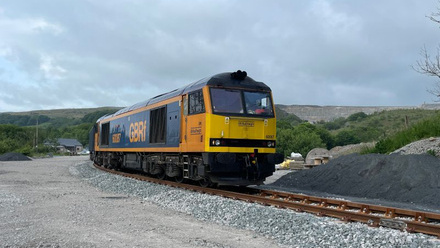DISRUPTing steel reuse
The UK’s Delivering Innovative Steel ReUse ProjecT (DISRUPT) has introduced a new toolkit. Sarah Morgan attended an event for a programme update.

A new toolkit has been launched as part of the Delivering Innovative Steel ReUse ProjecT (DISRUPT), led by the UK’s Alliance for Sustainable Building Products (ASBP).
The toolkit was developed by looking through literature, conducting interviews and developing case studies. It seeks to optimise the reuse of steel by providing computer resources that highlight where steel in old structures can be reused.
The team behind it were looking at a reality where there is not the UK domestic capacity to recycle steel and so two models of steel reuse are presented.
One is a stockholder-driven model, where stockholders go on to sell the steel they recover on the open market. Another is a client-driven model, where clients retain ownership.
The toolkit includes business considerations for steel reuse, stakeholder checklists, steel-reuse scenario-mapping, supply chain models, guidance and policy notes, literature review, and more than 10 case studies.
The product was unveiled at a launch event in London on 22 March. The project team is made up of steel-reuse experts Cleveland Steel & Tubes Ltd, the National Federation of Demolition Contractors, and the global construction company ISG, who hosted the event.
Identifying synergies
According to a report from the Green Alliance (see p13), aluminium and steel represent just 3% of material use by weight in the construction industry, but are responsible for 26% of the sector’s upfront carbon emissions.
The steel toolkit project was deemed necessary due to a perceived gap in co-ordination between those working with steel across industries. The ambition is that the toolkit will open people’s eyes to the potential of steel reuse from any one build.
It was felt that currently those within the industry do not reuse all the steel they possibly can. For example, one of the case studies in the toolkit looks at how steel piping can be reused in an unorthodox way in agricultural buildings, whereas in other circumstances, it may be only seen as useful in a single scenario.
Jonny Hawkshaw, Director at structural engineering firm Simple Works, speaking at the event, said the toolkit is, 'The best way to get the stakeholders involved and start talking to each other'.
While Sally Walsh, Senior Engineer at WSP, stressed that the toolkit was useful in that it was easy to download and get hold of and provided a helpful standardised approach.
Nine case studies were considered successful and two were more challenging, presenting learning opportunities around building age and co-ordination.
Across these projects, 353t of steel was reused, with 660t of carbon saved. Five resulted in cost savings, two were cost neutral and two were slightly more expensive. None had timeline implications.
Roy Fishwick, Managing Director at Cleveland Steel, who has been in the steel-reuse business for some time, says, 'This has to scale up. More of it has to occur'. He felt that the industry has come full circle with the reuse of steel, and noted that the current reality is leading him to express views that were being ignored when reuse fell out of fashion.
'People have a habit of only recognising reuse within the sphere within which they operate.' It was not a demand problem, more of an unfulfilled supply potential problem.
He felt more people needed to take his approach of taking steel 'for what it is and sell it for what it can be used for'. There was an overarching desire for relevant parties to view projects in the long term and not assume immediately they were embarking on a closed loop project.
With this in mind, Katherine Adams, Technical Director at ASBP, said there may be potential to use the tool in the future at the start of a project, rather than to examine the usability of materials from an old project.
Fishwick noted projects were being pushed by engineers or client led. 'Industry is generally risk averse.' Although he noted, people are looking to be circular to win work.
DISRUPT 2 is also on the horizon, to start in May this year for 18 months. This will be a deep dive with demolition contractors, a reuse platform, procurement analysis, demolition guidance toolkits, structural steel and non structural steel products, and wide stakeholder engagement.
The toolkit can be downloaded at asbp.org.uk/toolkit/disrupt-steel-reuse
Elephant & Castle town centre redevelopment
Project summary: Town centre redevelopmentLocation: Southwark, London, UK
Project type: Commercial/residential
Size: 70,144m²
Completion: Construction works started in 2022
and expect to complete in 2026.
Stakeholders involved:
- Delancey (developer)
- WSP (structural engineer)
- Allies and Morrison (architect)
- Multiplex (main contractor)
- EMR (reclaimed steel stockholder and supplier)
Key drivers for steel reuse:
The main contractor Multiplex suggested integrating steel reuse, which was strongly supported by the designer and the client. The overarching goal was to achieve a low-carbon solution.
Amount of steel reused:
At least 96t with the potential to increase this further.
Embodied carbon savings:
At least 160t of CO₂ with the potential to increase this further.
Agricultural buildings
Project summary: Agricultural steel-framed buildings made of reclaimed steel
Location: North Yorkshire, UK
Project type: Agricultural
Size: 30x15x6m structure
Completion: TBC
Stakeholders involved:
- Simple works (structural engineer)
- Cleveland Steel and Tubes (steel stockholder and supplier)
- Key drivers for steel reuse:
- Low-carbon structures for agriculture
- Providing a viable reuse pathway for reclaimed steel tubes
- Creating a structure that can compete commercially against traditional agricultural structures
- Creating a structure that is easy to construct
Amount of steel reused:
17t per building (30x15x6m structure).
Embodied carbon savings:
34t (76kgCO₂e/m²) compared to an equivalent traditional steel-framed structure*
*Carbon savings were calculated based on the lifecycle assessment of reclaimed steel by Cleveland Steel and Tubes. This includes inbound transport impact to the stockholder’s yard and excludes outbound transport impact to the construction site.
Domestic refurbishment project
Project summary: Residential refurbishment project
Location: Lichfield, West Midlands, UK
Project type: Residential
Size: 154m² total area
Completion: The project will complete by early 2023.
Steel works were completed in 2022.
Stakeholders involved:
- Philippa Birch-Wood (homeowner and architect)
- Hardgrave Construction (main contractor)
- Cleveland Steel and Tubes (reclaimed steel stockholder and supplier)
Homeowner Philippa Birch-Wood, who is also an architect, was the driving force for steel reuse motivated by circular economy and sustainability principles.
Amount of steel reused: 1.45t
Embodied carbon savings: 3t







